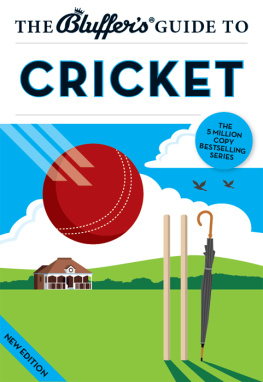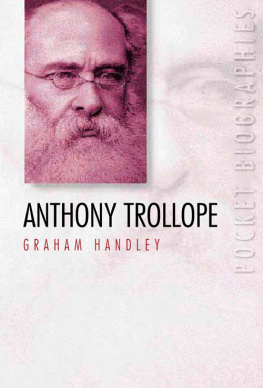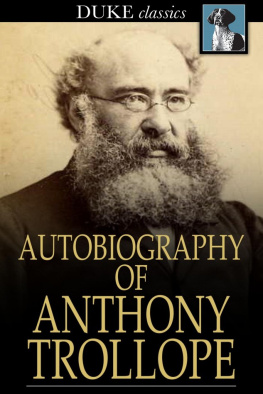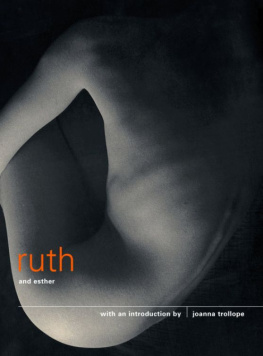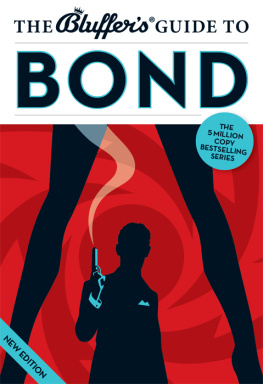

Colette House
52-55 Piccadilly
London W1J 0DX
United Kingdom
Email:
Website: bluffers.com
Twitter: @BluffersGuide
First published 1988
This edition published 2013
Copyright Bluffers 2013
Publisher: Thomas Drewry
Publishing Director: Brooke McDonald
Series Editor: David Allsop
Design and Illustration by Jim Shannon
All rights reserved. No part of this publication may be reproduced, stored in a retrieval system or transmitted in any form or by any means, electronic, mechanical, photocopying, recording or otherwise, without the prior permission of Bluffers.
A CIP Catalogue record for this book is available from the British Library.
Bluffers Guide, Bluffers and Bluff Your Way are registered trademarks.
ISBN: | 978-1-909365-12-4 (print)
978-1-909365-13-1 (ePub)
978-1-909365-14-8 (Kindle) |

It has been said that the English, not being by nature a religious people, invented cricket to give them some idea of Eternity.

I t has been said that the English, not being by nature a religious people, invented cricket to give them some idea of Eternity. This is blatant bluffing, though it does indicate that cricket is not to be treated lightly or dismissed as merely a sport. The English did not invent cricket, but they acted as its wet nurse, nurtured it, and finally made it their own. This is because cricket needs endless patience, unthinking loyalty and a slavish mentality: not the sort of game you can see being enjoyed by the hordes of Genghis Khan, the Sioux, the Paris mob of 1789 or the Bolsheviks.
GM Trevelyan famous historian and useful late-order bat once suggested that, if the aristocracy of the Ancien Rgime had spent more time playing cricket with their serfs, the French Revolution would never have taken place. The truth is that neither the French aristocracy nor their serfs could ever have wanted to play cricket; it is not their game.
Bored almost beyond endurance, the uninitiated spectators and even players of cricket will moan: Whats the point of it? Bluffers know that there is no point to cricket, any more than there is a point to tennis, ballet, rose gardens or nouvelle cuisine.
Cricket maintains its precarious existence because the show must go on. It has to be demonstrated that people can:
- Bowl faster.
- Score more runs.
- Make more appearances for their county.
- Take longer to score a run than ever before.
This, you must maintain stoutly (cricketers do lots of things stoutly), provides proof of human progress.
Support for English cricket the distinguished variety which is the main focus of this guide fluctuates with the performance of the national team. During decades of defeat, first by the West Indians and then the Australians, and then everybody else, it was reduced to a hardcore of thermos-gripping fans scattered thinly across increasingly shabby county grounds. But then, as the England team did better, interest revived. Smart new stands went up, new technology was introduced and a shorter form of the game called Twenty20 began pulling in large crowds. Now, it seems, cricket is in danger of becoming sexy and thats not a bluff.
Winning the Ashes in 2005, after 18 miserable, soul-searching years, was a vital turning point for England (more on the history of this venerable contest later). Fair-weather supporters suddenly appeared in droves, with politicians and other inveterate bluffers suggesting that theyd been lifelong fans all along. A few even hinted that, in their time, theyd been more than useful players themselves. When it was reported that, during an extended post-victory bender, Ashes hero Andrew Freddie Flintoff had relieved himself in the prime ministers rose garden, even some of the stuffiest cricket followers found it easy to smile indulgently.
To listeners of the BBCs Test Match Special, another boundary was crossed in 2009 when sassy young pop star Lily Allen (now known as Lily Rose Cooper) told presenter Jonathan Agnew (Aggers) that shed taken a fancy to the game and to fast bowler Graham Onions in particular.
Lily also showed an unexpected depth of cricket knowledge when she revealed that she preferred Tests to Twenty20 and old-fashioned cream flannels to the dazzling whites worn by the England team (who, despite this fashion blunder, managed to beat the Australians again that same summer). England and Lily (then tweeting about cricket to a million-plus followers) were on a roll.
In a second commentary box chat two years later, the same fragrant singer told Aggers how she was on the list to join the MCC (Marylebone Cricket Club waiting time for membership about 18 years) and how, more pressingly, she was about to make tea for husband Sams village team in Gloucestershire. For some reason she clearly didnt foresee much of a future as Mrs Onions.
By 2011, when England topped the world rankings, having thrashed the Aussies in their own backyard, an ignorance of cricket had become a social handicap, carrying with it risk of exclusion from pub, party and office chat. To the rescue comes a new, updated, equally authoritative Bluffers Guide.
Cricket bluffing ranges from hinting that you know more than you do, which is the general idea, to extravagant claims of a dazzling cricketing past, which is somewhat riskier. An extreme bluffer may even take the dangerous step of accepting an invitation to play. This is not recommended.
Before you start bluffing, a word of warning. Size up your victim. Try to sound out how much, if anything, they know. Take particular care at a cricket ground. If they are wearing a lurid egg-and-bacon-coloured blazer the preferred uniform of members of the MCC, which effectively runs the game or walk with pigeon feet (sign of a pace bowler), proceed with caution. If they are carrying a copy of the cricket annual Wisden or, worse still, a scorebook, run a mile.
This short but definitive guide will conduct you through the main danger zones often encountered in discussions about cricket. It will equip you with a vocabulary, easy-to-learn hints and evasive technique that will minimise the risk of being rumbled as a bluffer and might even allow you to be accepted as a cricketing connoisseur of rare ability and experience. But it will do more. It will give you the tools to impress legions of marvelling listeners with your knowledge and insight without anyone discovering that, until you read it, you didnt actually know the difference between bowling a maiden over and bagging a pair.
T iresome though it might seem, only a fool will start bluffing without a basic knowledge of how to play the game. Dont worry too much about the finer points; some professionals have only a slender grasp. Instead, top up any memories of childhood cricket with doses of the televised stuff and youll soon be halfway there. The TV coverage will probably take you back to the playground anyway as much of it is dominated by overgrown schoolboys with nicknames like Beefy and Bumble. But despite the larking about, these chaps know their cricket. You may remember that Sir Ian Beefy Botham had one or two useful games for England, while Bumble (David Lloyd) was not only a top-class batsman but a coach and umpire, too. You will need to be familiar with these names (and nicknames) if you are to withstand close scrutiny in the company of genuine cricket aficionados.
Next page
